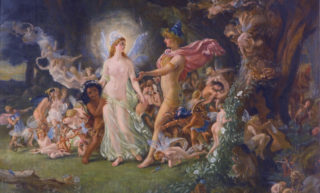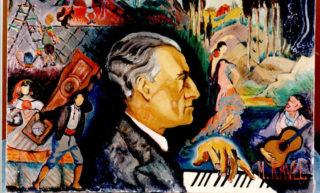A note-worthy day
Sinfonieorchester Basel
12 March 2020
Arabella Steinbacher, Violin
Marek Janowski, conductor
Felix Mendelssohn Bartholdy - Concerto for Violin and Orchestra
Richard Strauss - Sinfonia domestica
Richard Strauss’ Sinfonia Domestica takes a special place between two of his other tone poems, and it pays tribute to Mendelssohn, one of the composer’s earliest inspirators.
The work is a musical rendering of a regular day in the Strauss household. Baby Franz screams, mother Pauline sings a lullaby, father Richard works in his study, and the couple bickers and makes love. Reception of the work was diverse. Some found the subject matter too banal, others were shocked by the explicit rendition of the lovemaking scene. Regrettably, these critics ignored the musical qualities of the work. Although the piece didn’t altogether disappear, it never reached the status of two other tone poems, its predecessor Ein Heldenleben and its successor Eine Alpensinfonie, with which, one could argue, it forms a tryptich. While in A Hero’s Life, the hero, overlapping with the person of the composer, fights his adversaries and does works of peace – in other words displays his public life, in the Sinfonia Domestica, we witness the composer’s domestic life.
Likewise, the vast beauty of the mountains in An Alpine Symphony, which the SOB played in the 2017/2018 season, contrasts with the homily setting of the Sinfonia Domestica.
The form of the Sinfonia Domestica is a so-called tone poem, but, as the name suggests, it has a close resemblance to a regular symphony. However, the four parts blend into each other and are played as one large movement. In the introduction the characters (father, mother, child) are presented, each with their own themes. The second part, a scherzo, focuses on the baby. It depicts the parents’ joy, the screaming child and a cradlesong inspired by The Song of the Venetian Gondolier, one of Mendelssohn’s Songs Without Words. The third “movement” starts with a musical impression of the composer at work, and, after the composer’s wife has made her entry in the study, develops into a passionate lovemaking passage. In the final part, we hear some marital quibbles at the breakfast table before the piece enters into a joyful, rather stretched out finale.
To give you some guidance during the 45-minute performance, there are two occasions where the glockenspiel, a percussion instrument, strikes seven. At 7pm it is children’s bedtime; at 7am, it is time for the family to wake up.
Although Strauss (1864-1949) is usually seen as the musical successor of Wagner and Liszt, listening to his early violon concerto, one can hear he was influenced by Felix Mendelssohn (1809-1847) too. Having Strauss’ work be preceded by Mendelssohn’s violin concerto, one of his most emblematic works, puts the master of tone poems in an interesting perspective. Although over time Strauss developed his own style, he kept on championing Mendelssohn’s work, as his quotation of the Gondolier’s Song may prove. Even after the Nazis had banned the works of Jewish artists, Strauss, as conductor and Reichsmusikkammer president, kept on making efforts to have Mendelssohn’s works be performed. Thus Mendelssohn accompanied Strauss throughout his long life, at his desk, in public life and on a noteworthy day.
These English program notes have been published in the magazine (No. 6, 2019/2020) of the Sinfonieorchester Basel.







Comments